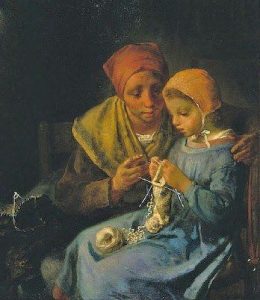Most of us, at some point in our lives, have been part of a group or a small community. In the olden days this was a face to face community, brownies, scouts, youth clubs, dance group, walking club, neighbourhood watch etc.
Today these a re still out there but increasingly we’re becoming members of online communities. I’m part of crochet clubs, reading clubs, groups for my home town, wellbeing forums and a number of arts and crafts groups. All of these are brilliant and I can feel part of a community as, between us (me and other keen participators out there) we work out tricky stitch problems or why that granny square has only 3 corners – you know the kind of thing! However, my online community don’t chat to me as I crochet or admire my lovely new wool and they can’t be there to just chat about the stuff our days are made of, because they are busy with their own lives, dipping into and out of the online communities.
re still out there but increasingly we’re becoming members of online communities. I’m part of crochet clubs, reading clubs, groups for my home town, wellbeing forums and a number of arts and crafts groups. All of these are brilliant and I can feel part of a community as, between us (me and other keen participators out there) we work out tricky stitch problems or why that granny square has only 3 corners – you know the kind of thing! However, my online community don’t chat to me as I crochet or admire my lovely new wool and they can’t be there to just chat about the stuff our days are made of, because they are busy with their own lives, dipping into and out of the online communities.
It remains a real joy to spend time regularly, with fellow crafters. It never matters if they are better than you or if they are beginners. What matters is that for a short while you are part of a community who do what you do.
Use your online communities for inspiration and sorting out knotty problems, but do consider finding a local group of people who do what you do and relish the company and support that only real human beings can offer.
Save

 ten, I look around at us all knitting and crocheting in the common room and am reminded of how many artists have chosen the knitter as inspiration. Is it the tranquility of features absorbed in the task? Is it something about the posture of the knitter, the bent neck, the symmetry of hands at work? Is it perhaps the contrast between sitter and their environment? For us, it is all of these things and a great deal more.
ten, I look around at us all knitting and crocheting in the common room and am reminded of how many artists have chosen the knitter as inspiration. Is it the tranquility of features absorbed in the task? Is it something about the posture of the knitter, the bent neck, the symmetry of hands at work? Is it perhaps the contrast between sitter and their environment? For us, it is all of these things and a great deal more.